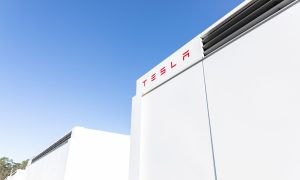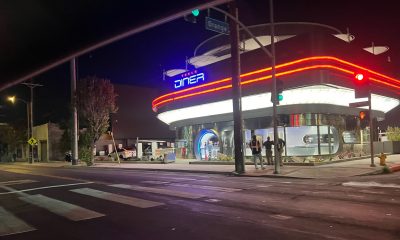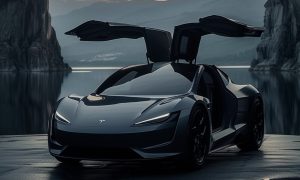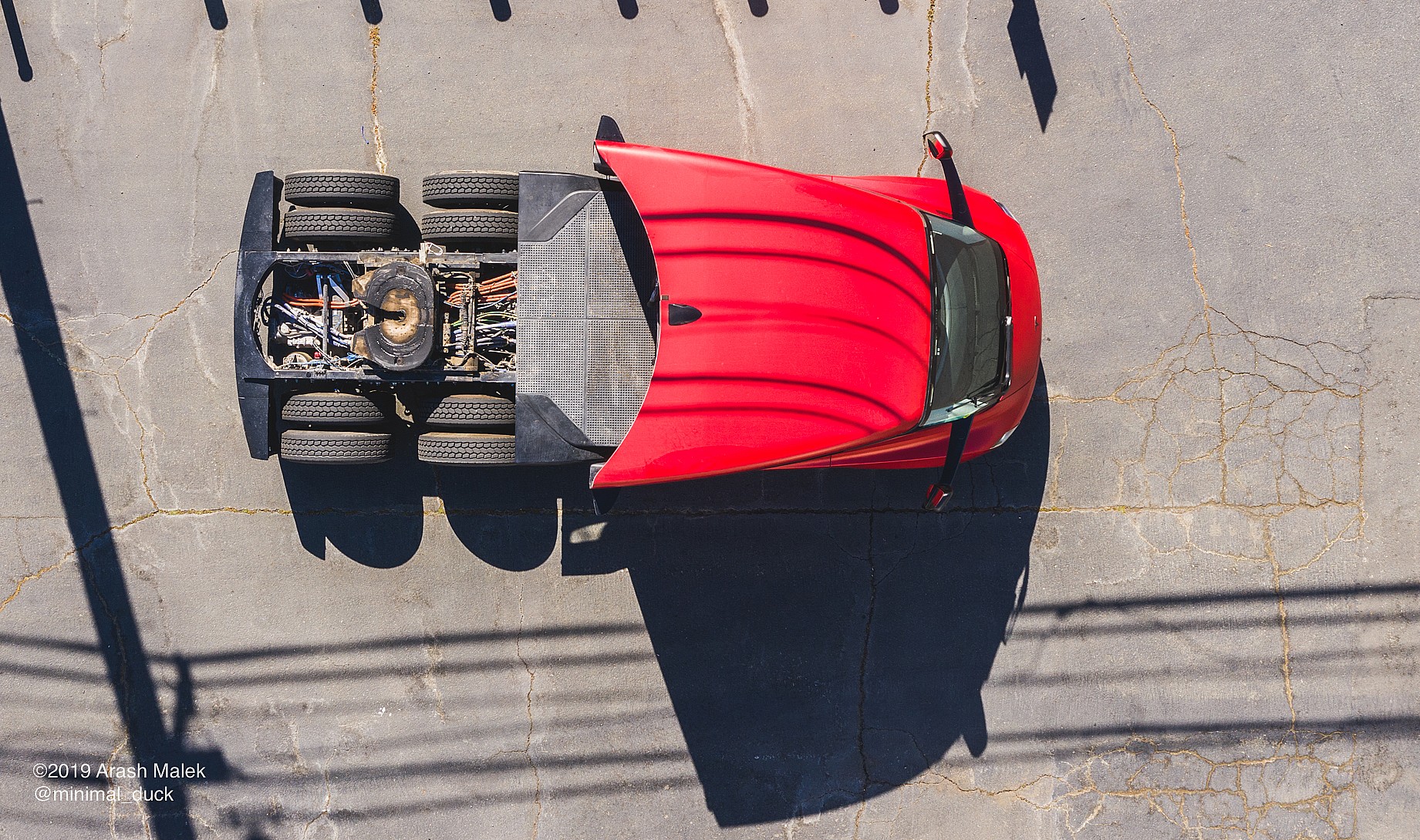

News
Tesla’s next ‘big unveil’ after Model Y will be its battery growth story
Tesla’s 2020 is bound to be a historic year, for more reasons than initially expected. Unlike 2017 and 2019, which were marked by impressive product unveiling events for the Semi, next-gen Roadster, Model Y, and Cybertruck, 2020 is poised to be a year where Tesla simply optimizes its operations to such a point that the company becomes sustainably profitable.
Save for 2018, Tesla has adopted the practice of unveiling new vehicles and energy products in a steady stream. This will not be the case this year, since Elon Musk himself has noted following the Cybertruck’s unveiling event that Tesla will not be holding formal vehicle launches for a while. The Model S Plaid is expected to be rolled out later this year, but the vehicle’s launch could be similar to that of the Raven Model S and X — subtle and simple.
Unlike previous years, Tesla will likely not be focusing too much on the rollout of an upcoming vehicle after initial Model Y deliveries are conducted. With the all-electric crossover being manufactured and delivered to customers, Tesla will likely end up focusing its resources on strengthening its core technology, particularly its batteries. This will partly be due to the arrival of three vehicles that are set to be released soon: the Tesla Semi, the next-gen Roadster, and the Cybertruck.
Part of the reason behind the Model Y’s quicker than expected production ramp is due to the vehicle’s similarity to the Model 3. The two midsize EVs share 75% of their parts, which meant that their production process is not too different from each other. Tesla learned a hard lesson with the Model X and the Model S by over-designing the SUV and making it far too different compared to its sedan sibling, which resulted in massive production delays. This lesson appears to have been learned and adopted for the Model Y ramp.

But Tesla’s next three vehicles are not quite as simple as the Model Y in terms of their battery tech and production processes. While the Model Y will likely use the same battery packs as its Model 3 sibling, the Semi, Cybertruck, and new Roadster do not. In fact, due to their specs and features, each of these new vehicles will likely be equipped with batteries that hold Tesla’s best and latest innovations, and they be built on platforms that are new and specifically designed for each vehicle.
The Semi, for example, is a Class 8 long-hauler that has a range of 300-500 miles per charge. Its capability to haul 80,000 pounds of weight on the road is no joke, and the vehicle’s near-sports car performance suggests that the Semi requires a very large battery pack. Tesla has not revealed the size of the batteries in the two Semi prototypes that are undergoing real-world testing today, but speculations from the EV community go as high as 1 MWh due to the truck’s weight. With better battery efficiency, optimized software, and higher energy density in its cells, Tesla may be able to achieve the Semi’s long-range targets without necessarily using as many batteries as a small fleet of Model 3s.
The Cybertruck is not as large as the Semi, but it seems to require some notable battery improvements as well due to its price and specs. A top-tier Cybertruck costs below $70,000, and for that price, Tesla is offering over 500 miles of range per charge. Considering that the all-electric pickup truck is not exactly as sleek as the Model S in terms of aerodynamics, achieving such a range will likely require the all-electric pickup to have a pretty hefty battery. Batteries are usually considered as one of the most expensive parts of an EV, so it would be interesting to see just how low Tesla can push its battery prices down to make a behemoth of an EV go over 500 miles at a sub-$70,000 price.
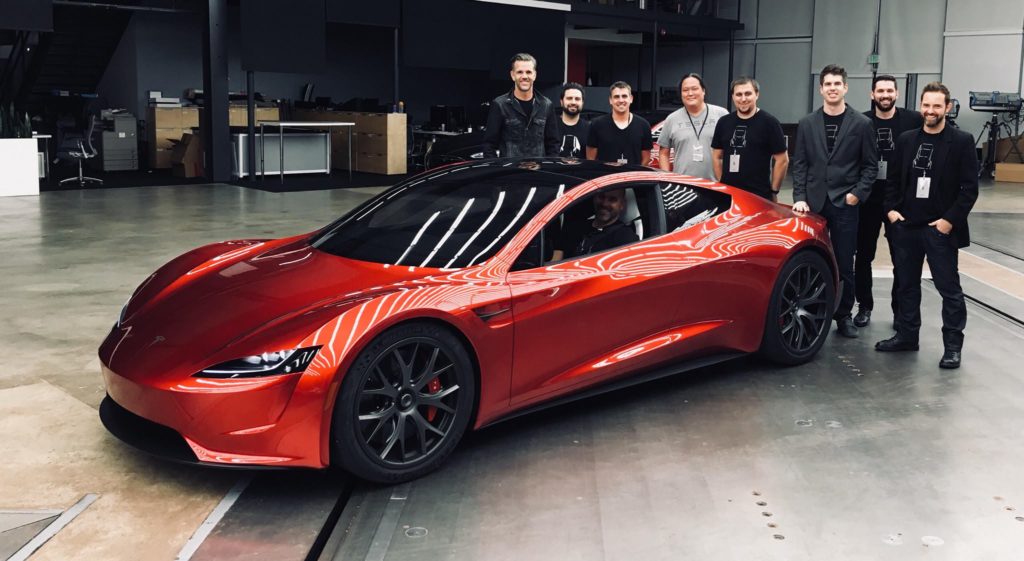
The next-gen Roadster may only be seeing a production rate of about 10,000 per year, according to Elon Musk, but the vehicle still requires improvements in its batteries to become a definitive “hardcore smackdown to gasoline cars.” This is because the Roadster was announced with a 200-kWh battery pack that provides 620 miles of range. Tesla was at a different place when it announced the next-gen Roadster’s specs. Hence, it would not be a stretch to speculate that the production version of the all-electric supercar will either have a slightly smaller but more energy-dense battery that still provides 620 miles of range, or a 200 kWh battery pack that offers far beyond 1,000 km in one charge.
Tesla’s growth story is usually tied to the company’s release of one best-selling electric vehicle after another. But this year, after the Model Y, Tesla’s growth story will become more of a battery-driven narrative. The company’s battery tech will ultimately determine whether or not the Semi, Cybertruck, and new Roadster will be a success. But if Tesla’s batteries are up for the task, the company’s disruption of the auto industry will likely end up accelerating even more.
What’s pretty interesting to note is that all these potential battery-related breakthroughs also apply towards Tesla’s Energy business, which is rarely even considered by Wall Street when analysts evaluate the company. Every battery-related milestone that is rolled out to the company’s vehicles is also introduced to its energy storage devices. With this in mind, it is not too farfetched to speculate that this year may also end up becoming a renaissance of sorts for Tesla Energy. Part of this push could involve the introduction of slightly smaller but more energy-dense residential batteries and a line of cheaper energy storage units that are just as good as the company’s current products.
This sounds like another disruption in the making.
News
Tesla Robotaxi has already surpassed Waymo in this key metric
Tesla Robotaxi has already overtaken Waymo in Austin in one key metric, but there’s still more work to do.

Tesla Robotaxi has already surpassed Waymo in one extremely important key metric: size of service area.
Tesla just expanded its service area in Austin on Monday morning, pushing the boundaries of its Robotaxi fleet in an interesting fashion with new capabilities to the north. Yes, we know what it looks like:
🚨 Tesla’s new Robotaxi geofence is…
Finish the sentence 🥸 pic.twitter.com/3bjhMqsRm5
— TESLARATI (@Teslarati) July 14, 2025
The expansion doubled Tesla Robotaxi’s potential travel locations, which now include the University of Texas at Austin, a school with over 53,000 students.
The doubling of the service area by Tesla has already made its travel area larger than Waymo’s, which launched driverless rides in October 2024. It became available to the public in March 2025.
According to Grok, the AI agent on X, Tesla Robotaxi’s current service area spans 42 square miles, which is five square miles larger than Waymo’s service area of 37 square miles.
Tesla Robotaxi (red) vs. Waymo geofence in Austin.
Much can be said about the shape… but the Robotaxi area is now ~3.9 mi² (10 km²) larger than Waymo’s!! pic.twitter.com/dVfh2ODxJC
— Robin (@xdNiBoR) July 14, 2025
The service area is one of the most important metrics in determining how much progress a self-driving ride-hailing service is making. Safety is the priority of any company operating a ride-hailing network, especially ones that are making it a point to use autonomy to deploy it.
However, these companies are essentially racing for a larger piece of the city or cities they are in. Waymo has expanded to several different regions around the United States, including Arizona and Los Angeles.
Tesla is attempting to do the same in the coming months as it has already filed paperwork in both California and Arizona to deploy its Robotaxi fleet in states across the U.S.
As the platform continues to show more prowess and accuracy in its operation, Tesla will begin to expand to new areas, eventually aiming for a global rollout of its self-driving service.
News
Tesla Megapacks arrive for massive battery replacing coal plant
Tesla Megapacks have started arriving on-site to the Stanwell Battery Project, just as Queensland prepares to wind down the Stanwell coal plant.
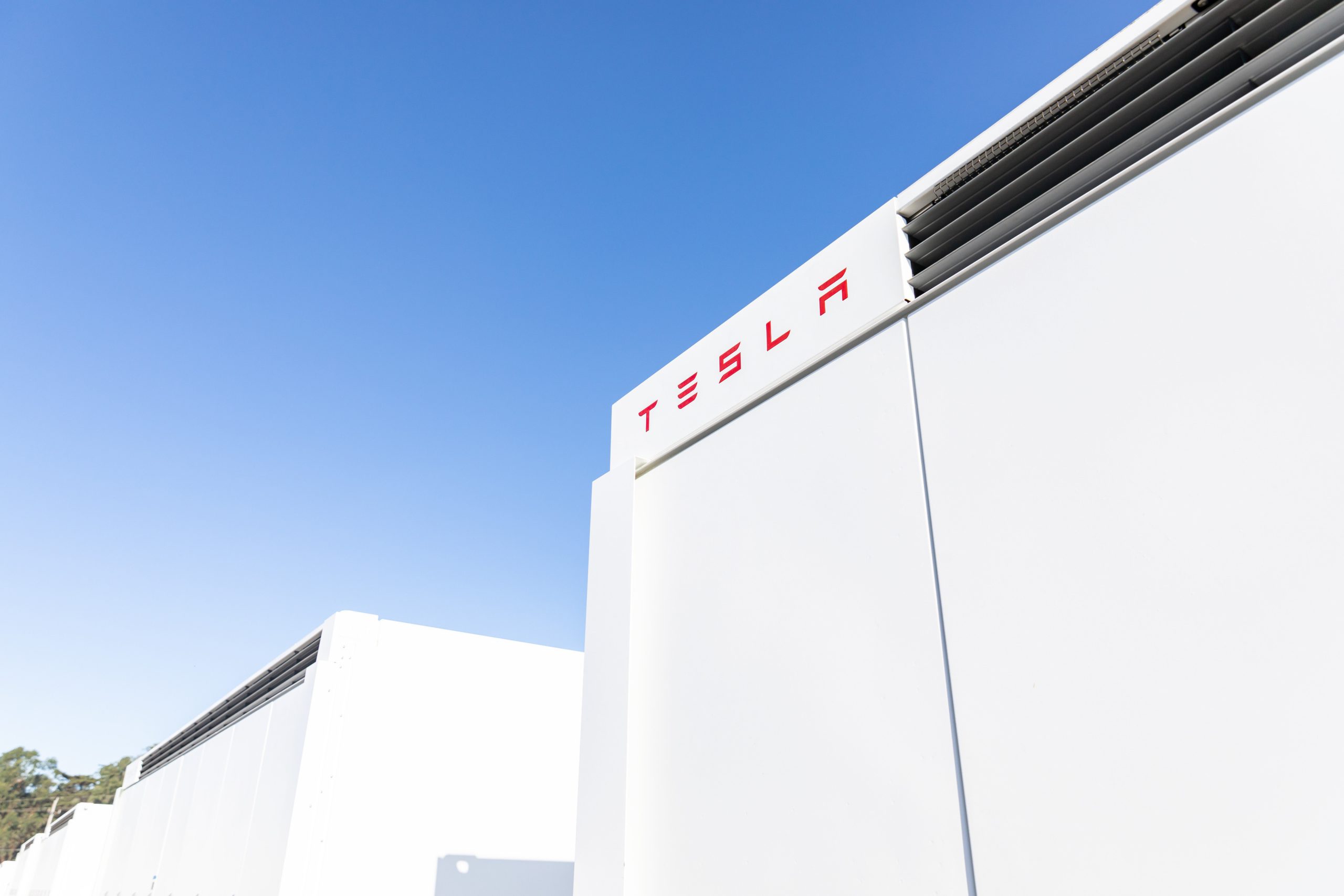
The first of over 300 Tesla Megapacks have arrived to the site of a massive battery energy storage system (BESS) being built in Australia, dubbed the Stanwell Battery Project after a coal plant it’s set to replace.
In a press release last week, the Stanwell Battery Project announced that the first Tesla Megapack 2XL units had arrived to the site, which is located outside of Rockhampton in Queensland, Australia. The project will eventually feature 324 Megapack units, set to arrive in the coming months, in order to support the 300MW/1,200MWh battery project.
“The Stanwell Battery is part of the diversification of our portfolio, to include cleaner and more flexible energy solutions,” said Angie Zahra, Stanwell Central Generation General Manager. “It is just one part of the 800 MW of battery energy storage capacity we have in our pipeline.
“Capable of discharging 300 MW of energy for up to four hours (1,200 MWh), our mega battery will be one of the largest in Queensland.”
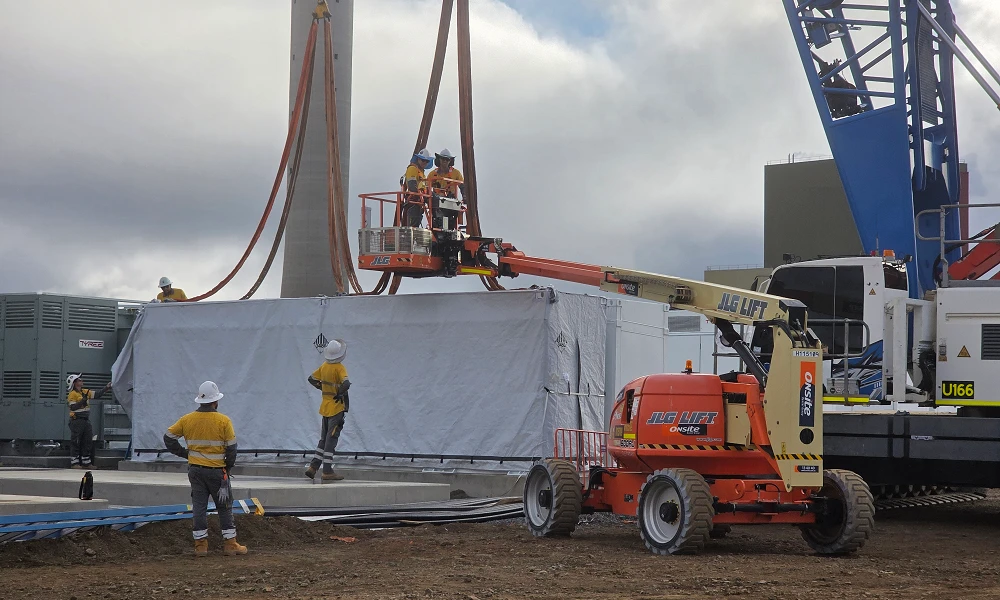
Credit: Stanwell
Did you know Tesla’s Lathrop facility churns out a Megapack every 68 minutes? That’s enough energy to power 3,600 homes for an hour per unit! ⚡️ pic.twitter.com/bG6fpHkB9O
— TESLARATI (@Teslarati) June 11, 2025
READ MORE ON TESLA MEGAPACKS: Tesla Lathrop Megafactory celebrates massive Megapack battery milestone
The state is working with government-owned company Yurika to facilitate construction, and the process is expected to create roughly 80 jobs. The project is expected to come fully online in May 2027, with initial commissioning of the Megapacks aiming for November 2025.
The Stanwell Battery is set to replace the nearby Stanwell coal generation plant, which the government is planning to wind down starting in 2026 as part of efforts to reach an 80 percent renewable energy generation ratio by 2035. Meanwhile, the government is also set to begin winding down the Tarong and Callide coal plants, while several other Megapack projects are being built or coming online. o ya
Tesla currently has two Megapack production facilities, located in Lathrop, California, in the U.S. and another that came online earlier this year in Shanghai, China. The Shanghai Megafactory shipped its first units to Australia in March, while both factories are expected to be capable of producing 10,000 Megapack units per year upon reaching volume production.
News
The Tesla Diner is basically finished—here’s what it looks like
The company first broke ground on the Diner, Drive-in, and Supercharger location in September 2023. Now, it has served one of its first internal customers.

Tesla has finally completed the construction of its highly anticipated Diner, Drive-in, and Supercharger in Los Angeles, and recent photos of the interior’s “retro-futuristic” style are making their way around the internet.
X user Brad Goldberg shared photos from the Tesla Diner site last Tuesday, depicting some of the Supercharger stalls, indoor and outdoor seating areas, multiple neon lights, and even an Optimus robot. Goldberg also noted that there had been a “flurry of activity on site” while he was snapping the photos last week, suggesting that the restaurant location could be getting close to opening.
The Tesla Diner also served one of its first internal customers in the past few days, as Elon Musk posted on X on early Monday morning that he had just finished up eating a meal at the site:
I just had dinner at the retro-futuristic Tesla diner and Supercharger.
Team did great work making it one of the coolest spots in LA!
The photos also show that the site is pretty much done, with some of them even showing vehicles charging at the charging stalls.
You can see some of the latest photos of the Tesla Diner below.
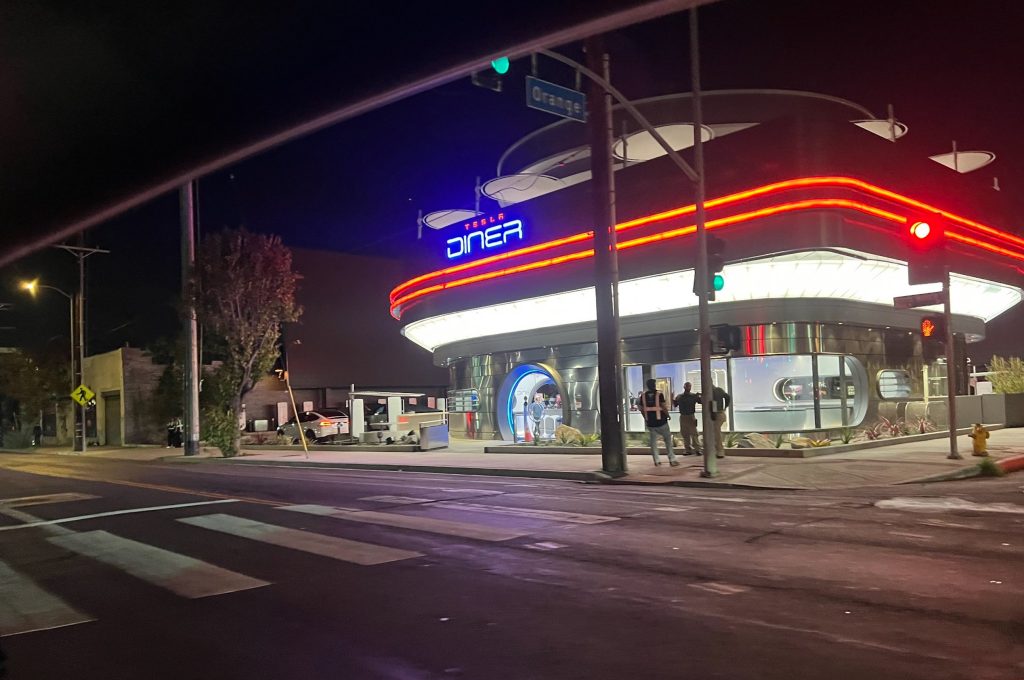
Credit: BradGoldbergMD | X
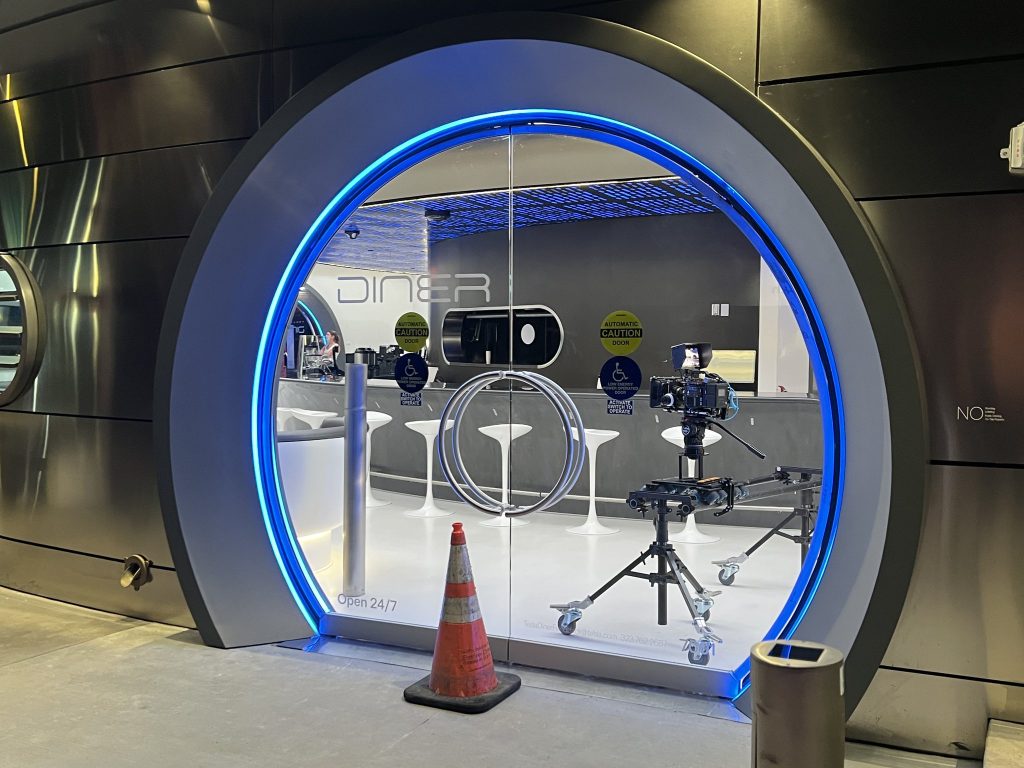
Credit: BradGoldbergMD | X
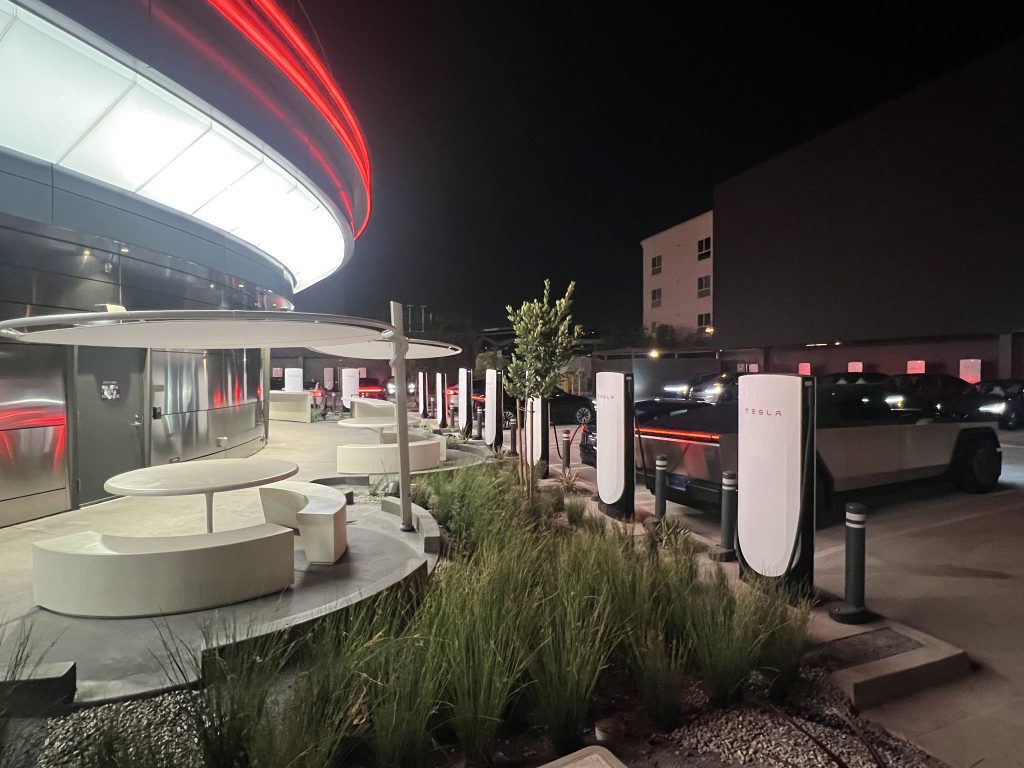
Credit: BradGoldbergMD | X
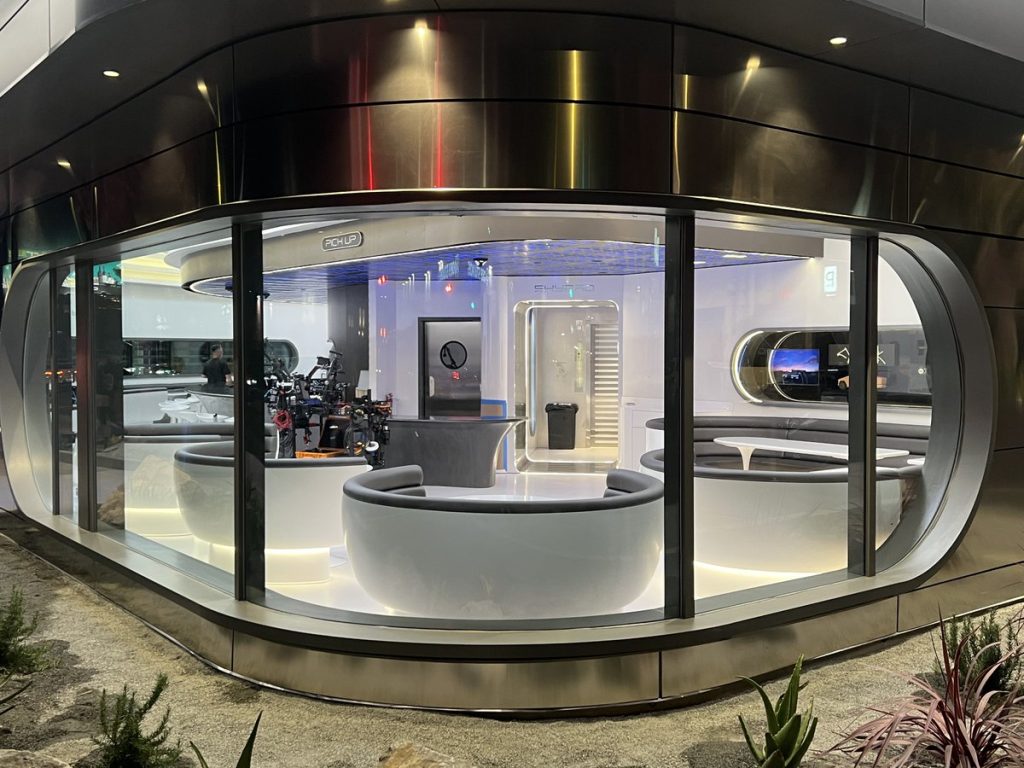
Credit: BradGoldbergMD | X
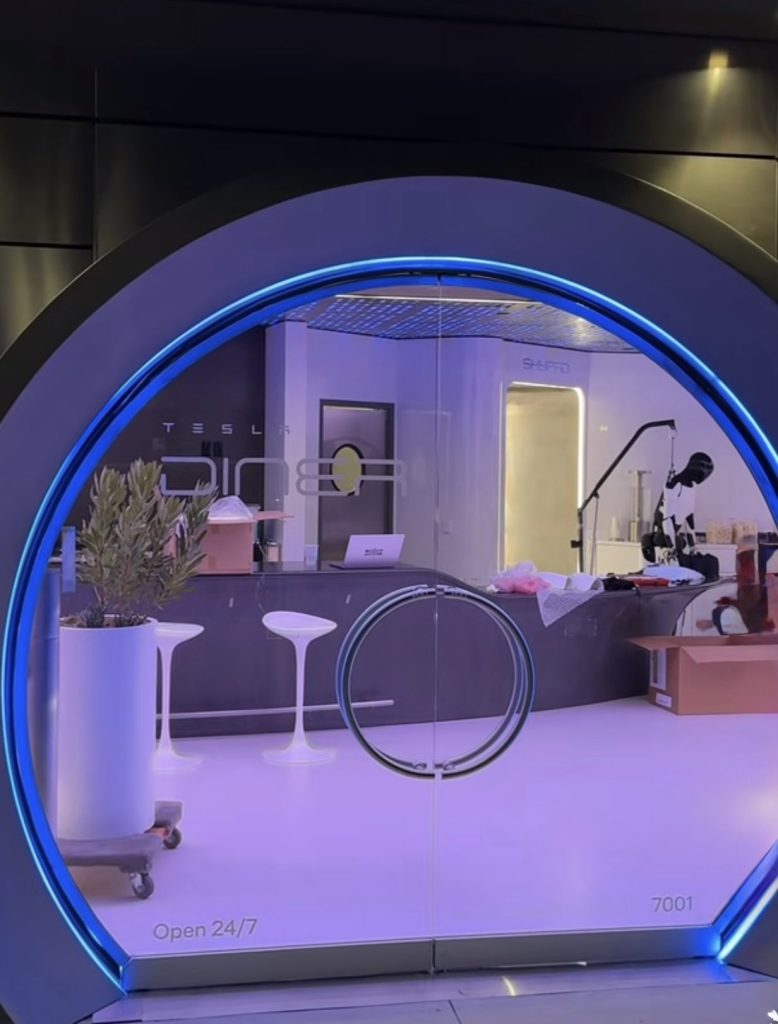
Credit: TeslaKing420 | X
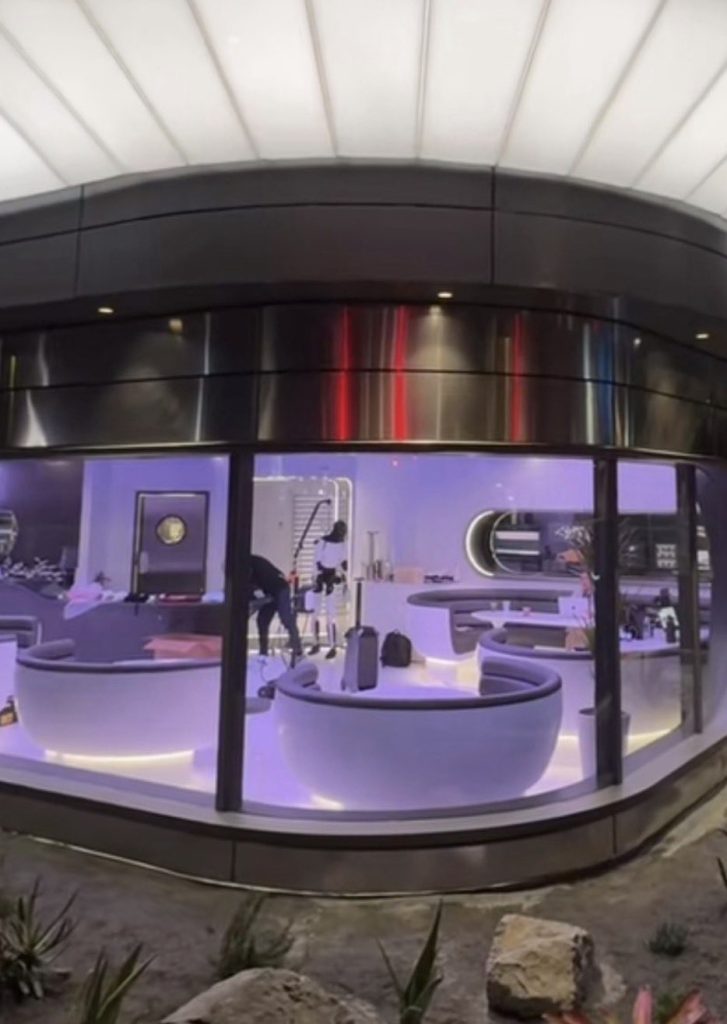
Credit: TeslaKing420 | X
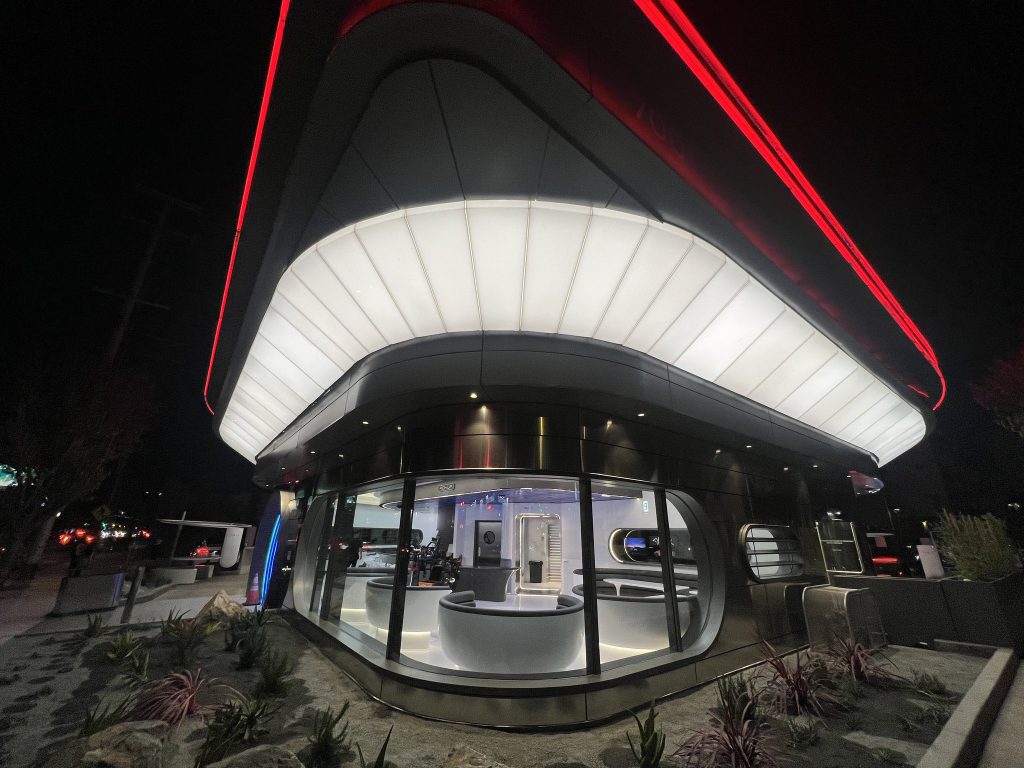
Credit: Brad Goldberg (via Sawyer Merritt on X)
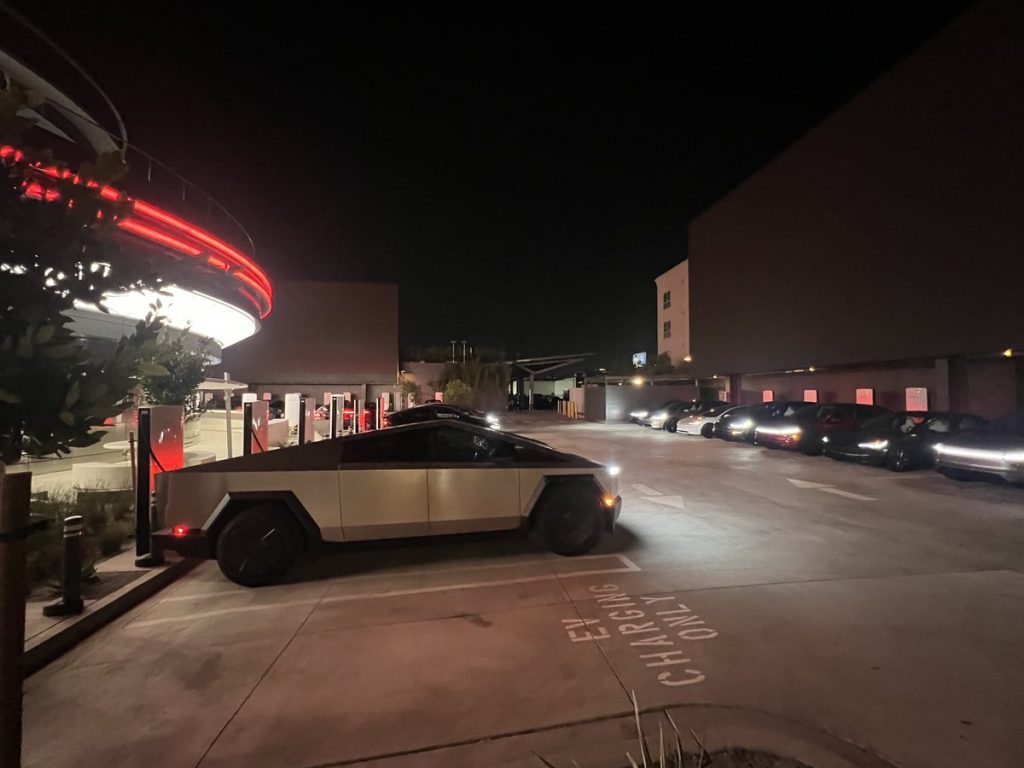
Credit: Brad Goldberg (via Sawyer Merritt on X)
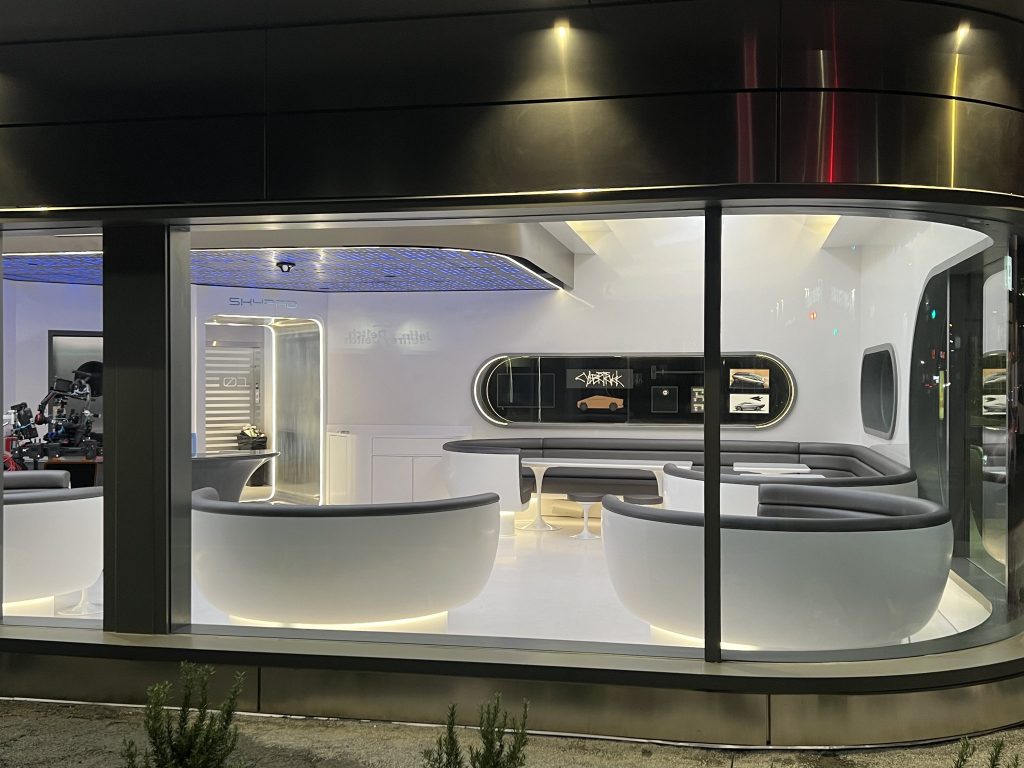
Credit: Brad Goldberg (via Sawyer Merritt on X)
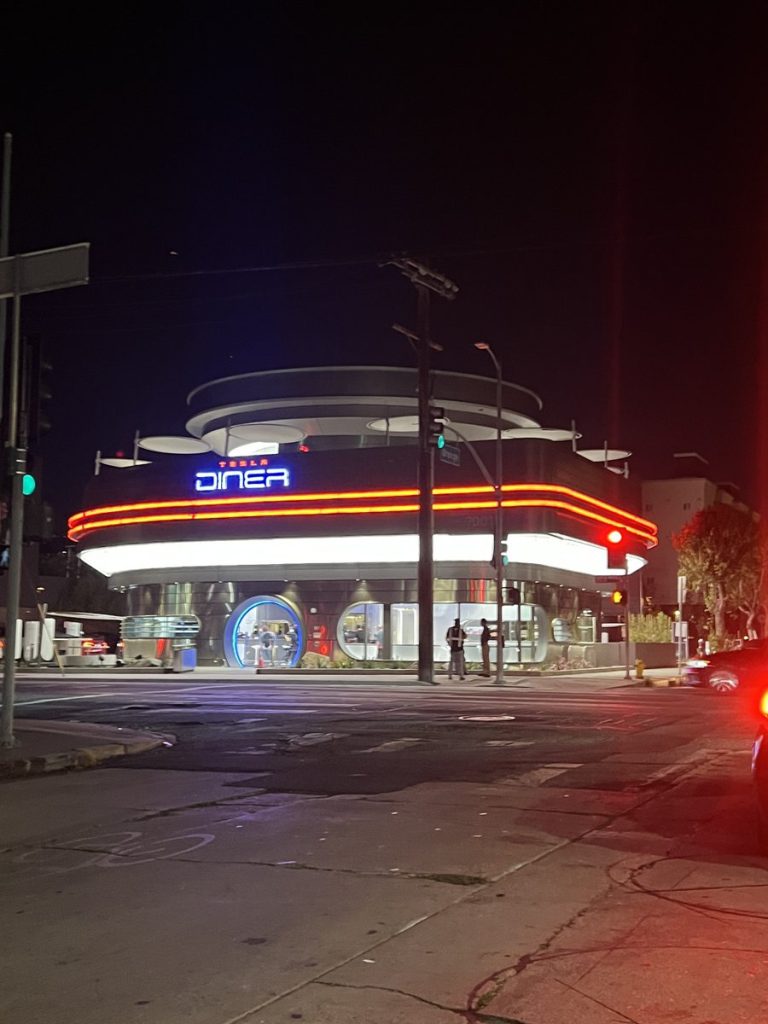
Credit: Brad Goldberg (via Sawyer Merritt on X)
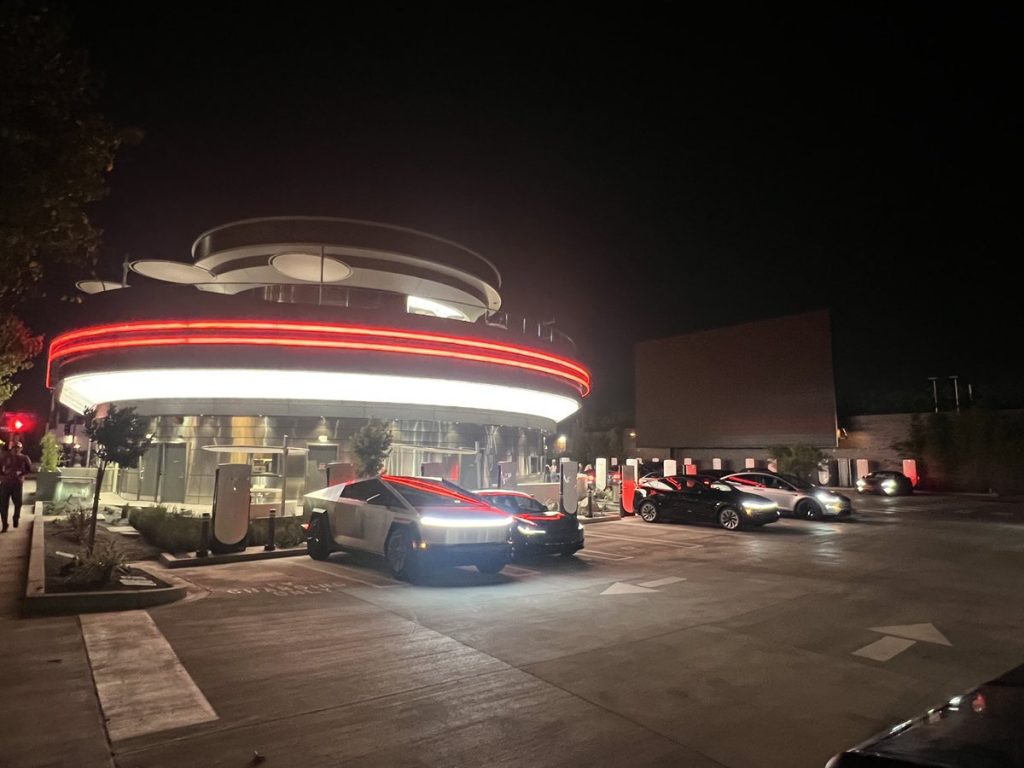
Credit: Brad Goldberg (via Sawyer Merritt on X)
READ MORE ON TESLA’S LA DINER: Tesla readies Drive-In Diner Supercharger for launch with app inclusion
When will the Tesla Diner open to external customers?
While it’s still not open to external customers yet, the news again suggests that the company could be close to an official opening date. Tesla first broke ground on the Diner in September 2023, after receiving a wave of building permit approvals throughout that year. Teslarati also covered much of the construction progress throughout last year, including when crews installed the first and second drive-in screens.
Located at 7001 West Santa Monica Boulevard, the idea was first discussed in 2018 by Musk and a few others on Twitter, featuring 1950s rock and roll, waiters on roller skates, and drive-in movie theater screens playing clips from some of history’s best movies. Notably, the photos of the front doors also show that the site will be open 24 hours a day, 7 days a week, whenever it does end up opening.
Tesla’s progress on Supercharger with diner, drive-in seen in aerial footage
-

 Elon Musk2 weeks ago
Elon Musk2 weeks agoTesla investors will be shocked by Jim Cramer’s latest assessment
-

 News2 days ago
News2 days agoTesla debuts hands-free Grok AI with update 2025.26: What you need to know
-

 Elon Musk4 days ago
Elon Musk4 days agoxAI launches Grok 4 with new $300/month SuperGrok Heavy subscription
-

 Elon Musk7 days ago
Elon Musk7 days agoElon Musk confirms Grok 4 launch on July 9 with livestream event
-

 News2 weeks ago
News2 weeks agoTesla Model 3 ranks as the safest new car in Europe for 2025, per Euro NCAP tests
-

 Elon Musk2 weeks ago
Elon Musk2 weeks agoxAI’s Memphis data center receives air permit despite community criticism
-

 News4 days ago
News4 days agoTesla begins Robotaxi certification push in Arizona: report
-

 News2 weeks ago
News2 weeks agoTesla sees explosive sales growth in UK, Spain, and Netherlands in June




